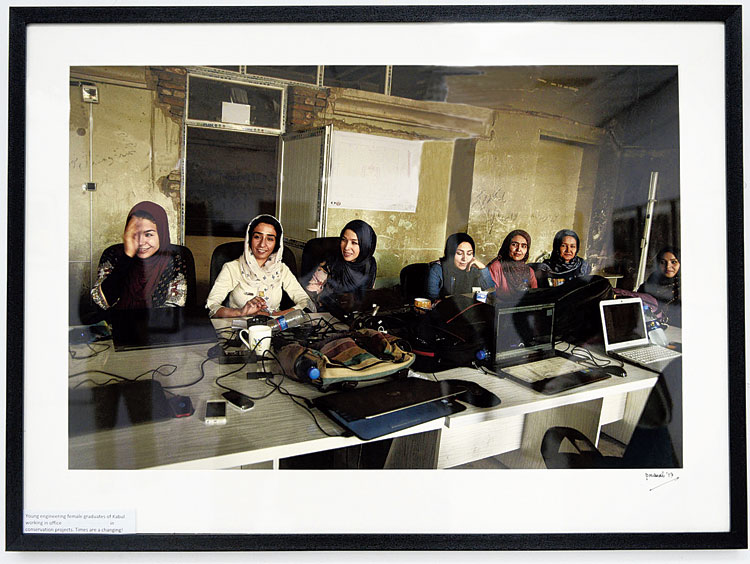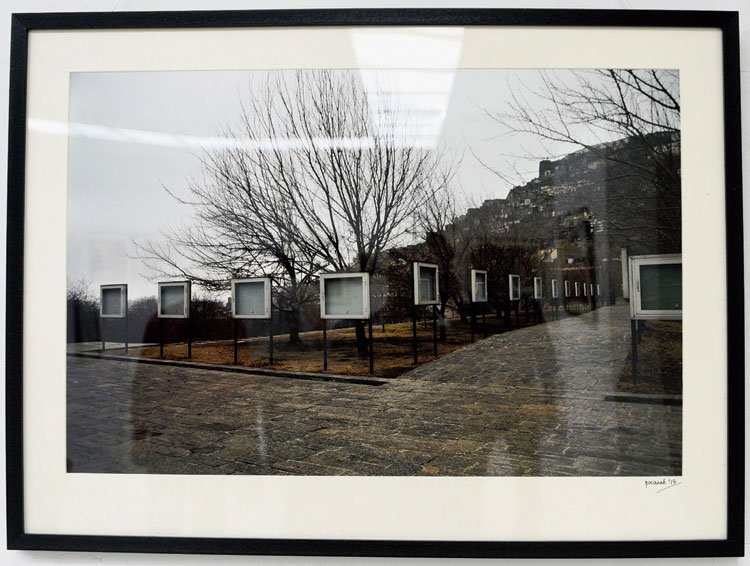A photograph of women sitting across a table with laptops is not something striking unless the place where the photograph was taken is known and its context explained.
The women, all engineers, form nearly a quarter of the workforce restoring the Darul Aman palace near Kabul, where the Taliban had banned women from going to school and where women working at construction sites are considered a taboo.
Pranab Mukhopadhyay, 70, an auditor who spent more than three years as a consultant at a World Bank project for the Afghan government, had photographed these women at work.
“This project is widely discussed in Afghan society because of the large number of women participating in it. Women seated with male colleagues and working hand in hand is still not very common in Kabul,” he said.


A photograph of women engineers at work to restore the Darul Aman palace near Kabul Picture by Gautam Bose

Other photographs on display Pictures by Gautam Bose
Mukhopadhyay is displaying 52 of his photographs, showing life in the Afghan capital where he lived and worked from 2014 to 2017.
The Darul Aman palace was built in the 1920s and was the seat of government under King Amanaullah, known to be a reformist.
Heavy shelling by warring groups in the 1990s, who were trying to take control of Kabul, led to the destruction of the palace.
Mukhopadhyay, an alumnus of Ramakrishna Mission Vivekananda Centenary College in Rahara, has kept 14 photographs exclusively on women and girls at the exhibition in Gaganendra Shilpa Pradarshashala. They depict women at work, out on the streets and girls going to school.
Other photographs include one that shows how life in Kabul has limped back to normality and a graffiti of two large eyes on the boundary wall of the National Directorate of Security, drawn by a group of young artists who named themselves Art Lord, mimicking the word “warlord”.
He said he had lost friends to blasts in Kabul. A year after he reached Kabul, a blast blew up parts of the Park Palace hotel where he had been put up. “Two of my colleagues and a woman from Delhi working for an NGO were among the dead.”
When Mukhopadhyay was offered the job, his family didn’t resist, he said. “I told them that there was risk in everything. One of the reasons I took up the Kabul job was because I wanted to take photographs of the people and the place.”
The exhibition is on till Wednesday.

Buzkashi, the national sport of Afghanistan Picture by Gautam Bose
“The graffiti was a warning to the government that the people were keeping an eye on how they were working,” said Mukhopadhyay, a 1975-batch Indian Audit and Accounts Service officer who resigned after 27 years of service.
His Kabul job included auditing the Afghan government’s finances and capacity building in the auditor general’s office. International donors relied on audit reports before releasing funds.










